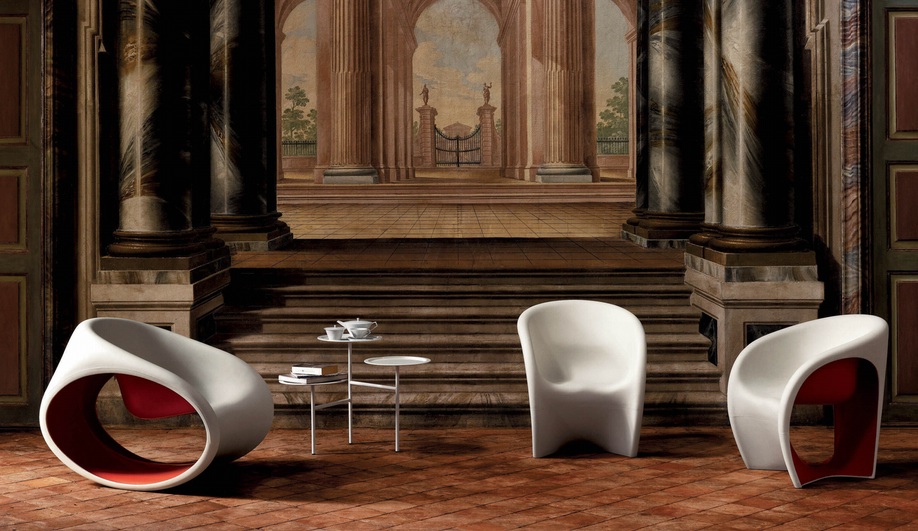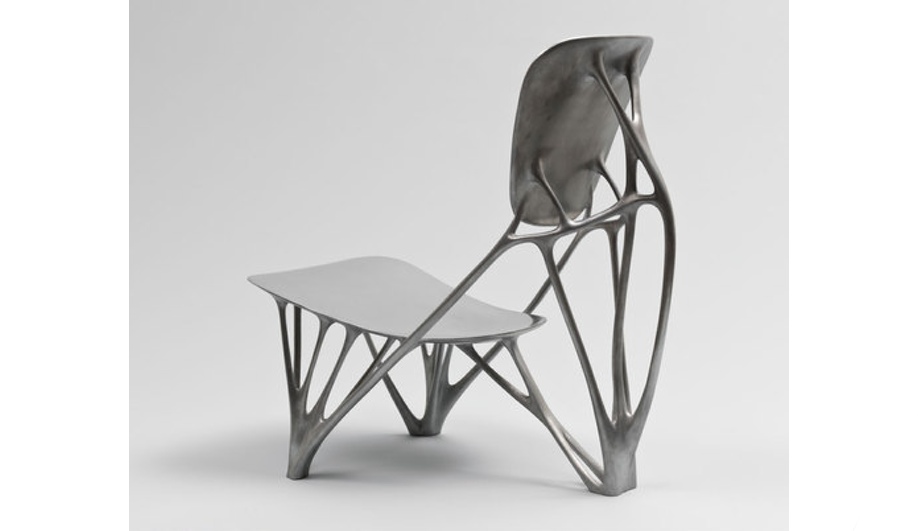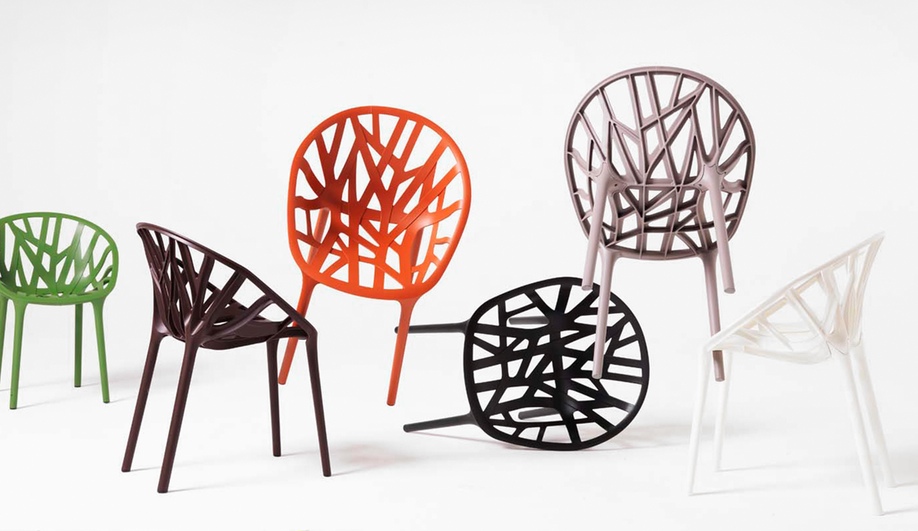

1 Louis Ghost by Philippe Starck for Kartell (2002)
The chair that launched a thousand impersonators – all of them mere phantoms of the original. Like the Juicy Salif, the Louis Ghost is pure Starck. In a year that was great for chairs, the Louis Ghost was the first in a family of popular polycarbonate chairs worthy of mythologizing. The French designer is best at waxing poetic on his designs, and when he presented this one for the first time, he said, “It is a ‘Louis something’, a sort of ghost, a reflection, the shadow of a chair in a style that I have called Louis Ghost, the ghost of Louis…[E]veryone recognises it and sees it as something familiar. It’s here when you want to see it and you can blend it in if you want to be discreet. It is half disappearing, dematerialising. Like all the production of our civilisation.”

2 Favela by the Campana brothers for Edra (2003)
If Sergio Rodrigues was the godfather of mid-century Brazilian design, Humberto and Fernando Campana represent their country’s millenial identity. Their furnishings make self-aware references to São Paulo’s playful spirit (the Vermelha and Corallo chairs) and to its informal communities. Inspired by the city’s slums, where resourceful tenants build their own homes and amenities, the Favela chairs are assembled by hand, ensuring no two are alike. Of course, the wood assemblages could also be seen as a symbol of marginalization transformed into a luxury object. The humorist David Rakoff had fun with this, writing in his essay “Don’t Get Too Comfortable,” that “the average monthly income for a family in the Brazilian favelas is two hundred reais, or roughly $72. The Favela armchair retails for over $3,000.”

3 MT (Empty) by Ron Arad for Driade (2004)
A lot of technology goes into the making of an empty – or MT – rocker. The hollowed volume of the duotone piece (and the accompanying chair, released in 2014) is achieved through rotational moulding. The technique involves rotating a single mould in an oven as a layer of plastic wraps around it; then, as the first layer is cooling, a second layer is injection moulded onto the chair. In this way, one mould can be used to create a complex form with two colours – a rough-textured white or sand-grey on the outside and a glossy red, lilac, black or violet on the interior. It was a new way of using a new fabrication process, and showed how innovative Ron Arad was and continues to be.

4 Supernatural by Ross Lovegrove for Moroso (2005)
Another design maverick, Ross Lovegrove has worked with Moroso on its most technologically advanced chairs. The polypropylene Supernatural – with its oddball backrest that seamlessly morphs into seat and legs – has a complex four-part process in which the mould is heated, gas is fed into it to blast holes into the backrest, the seat is removed from the mould and left to dry and harden on a separate, wooden mould. The result is a distinct design that deserves all the fuss.

5 Pane by Tokujin Yoshioka (2006)
Why bother with complex moulds at all, when you can bake your chair in a simple cylinder? Japanese designer Tokujin Yoshioka was so inspired by an article in National Geographic on ultra-strong fibres that he decided his Pane chair would be a confection made of polyester elastomer, packed into a cylindrical container and heated into shape. When pulled out, the chair is like a giant white sponge sturdy enough to support the user’s weight. Yoshioka showed the chairs off at the Moroso flagship showroom in Milan during design week in 2006, and filled the entire space with a snowdrift installation made of translucent fibres. If we eat with our eyes, then the sight of these loaves of Pane (Italian for “bread”) in their ethereal setting were something to savour.

6 Chair_One by Konstantin Grcic for Magis (2006)
The god of chairs, Konstantin Grcic is revered for his rational approach to design. Even Chair_One, his most elaborate design, was a direct product of its process rather than an exercise in expressive form. As he explained to writer Tim McKeough in the June 2007 issue of Azure, when Magis asked him to come up with a chair in die-cast aluminum, his studio discovered that the material needed to be applied in small sections for optimal results. So they worked with wires and aluminum sheets, arranging them into “a kind of line drawing of a three-dimensional shape…We were led by the logic of following a process, and that process brought us step by step to certain decisions.”

7 Bonechair by Joris Laarman (2006)
Biomimicry took on an entirely new form in Dutch designer Joris Laarman’s Bone collection. The chair’s shape is based on an algorithm derived from Laarman’s research into the natural processes by which trees and bones grow. This piece of code was used to customize the chair’s 3D-printed ceramic mould. While the chair is aluminum, Laarman says that the nature-derived math could be used to build architectural forms of any shape or dimension. Meanwhile, the designer has moved on to many other endeavours on the vanguard of innovation, and making many of his discoveries available on an open source platform.

8 Spirit House by Daniel Libeskind for Nienkämper (2007)
Anyone who has been inside the Royal Ontario Museum in the past eight years will recognize this sculptural chair, designed specifically for the Crystal addition by Daniel Libeskind. The architect collaborated on the piece with the legendary Canadian manufacturer Nienkämper. Klaus Nienkämper shared details of the process in the March/April 2008 issue of Azure: “I still have the first concepts, which were just not possible – all glass and leather. But Daniel is very easy to work with. I asked him if he’d consider making a model and he made a whole bunch. We took some licence and made it into a chair you could actually sit in. We built a mock-up in the factory. He came to see it, and he was ecstatic. I think this chair’s going to be around 100 years from now – it has that kind of quality.”

9 Sketch by Front (2007)
Front, the Swedish design trio made up of Sofia Lagerkvist, Charlotte von der Lancken and Anna Lindgren, first grabbed the design world’s attention by launching a line of wallpaper with patterns created by an unconventional collaborator: a rat, which would chew through the surface to reveal a toile layer underneath. It’s no surprise then that the studio went on to even wilder experiments. This chair, part of the Sketch collection, retains the playful, meandering spirit of the Animals Instincts line, yet is achieved with state-of-the-art innovation. Thanks to Motion Capture technology, the trio was able to sketch furnishings in the air, the loopy strokes translated to digital files fed to a 3D printer that built the whimsical pieces up layer by layer.

10 Vegetal by the Bouroullec brothers for Vitra (2008)
Another pair of famous brothers, Ronan and Erwan Bouroullec bring elegance to all they do. These nature-inspired chairs, developed over four years with Vitra, are made of three layers of interwoven branches that together form a basket seat; the layers are injection moulded in fibre-reinforced polyamide and are joined to the legs in such a way as to appear as an organic whole. The chairs were everywhere in 2008 – clusters of the seats popped up in every major design fair – their friendly form and colourful finishes ensuring they would be instant classics.
